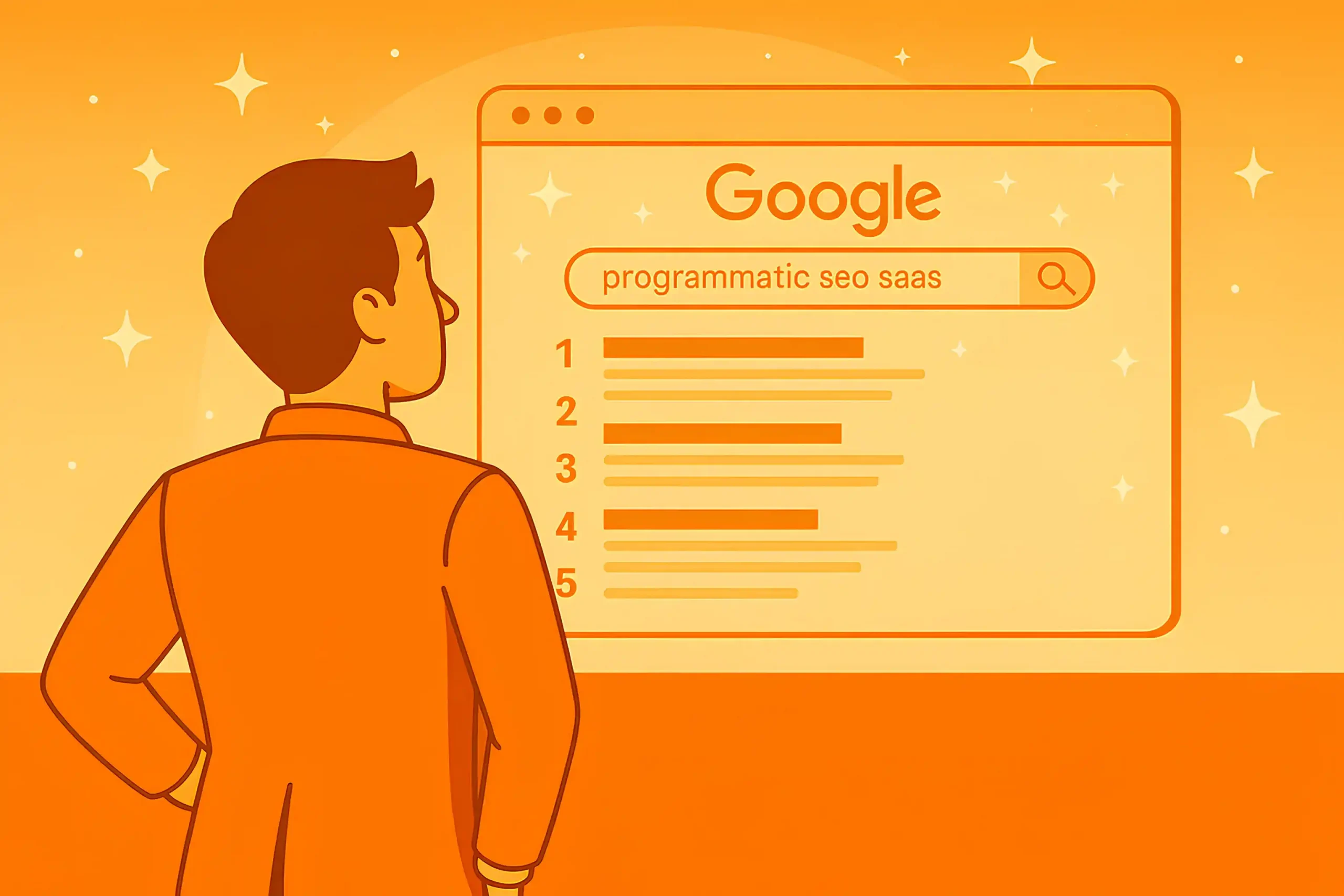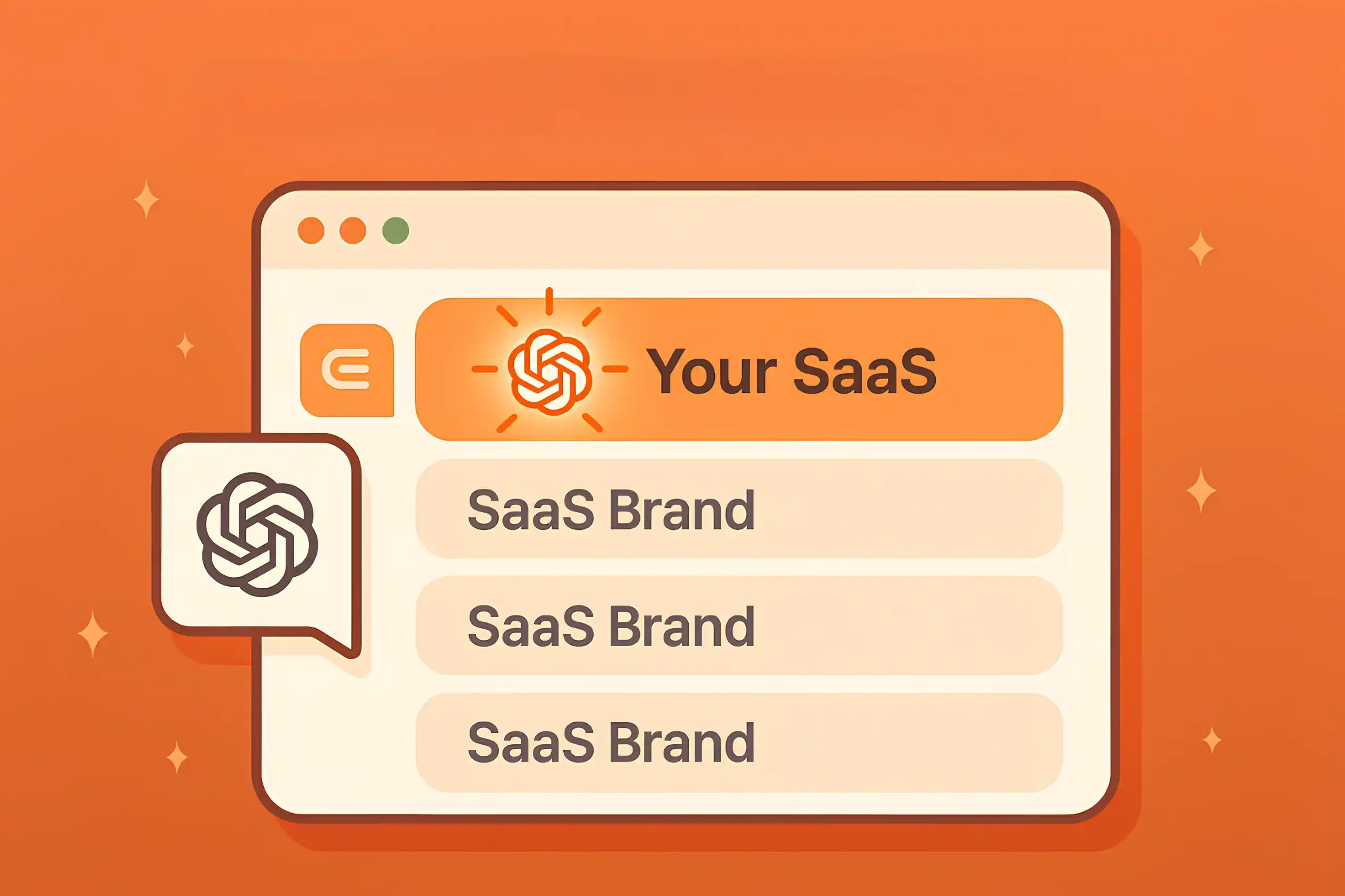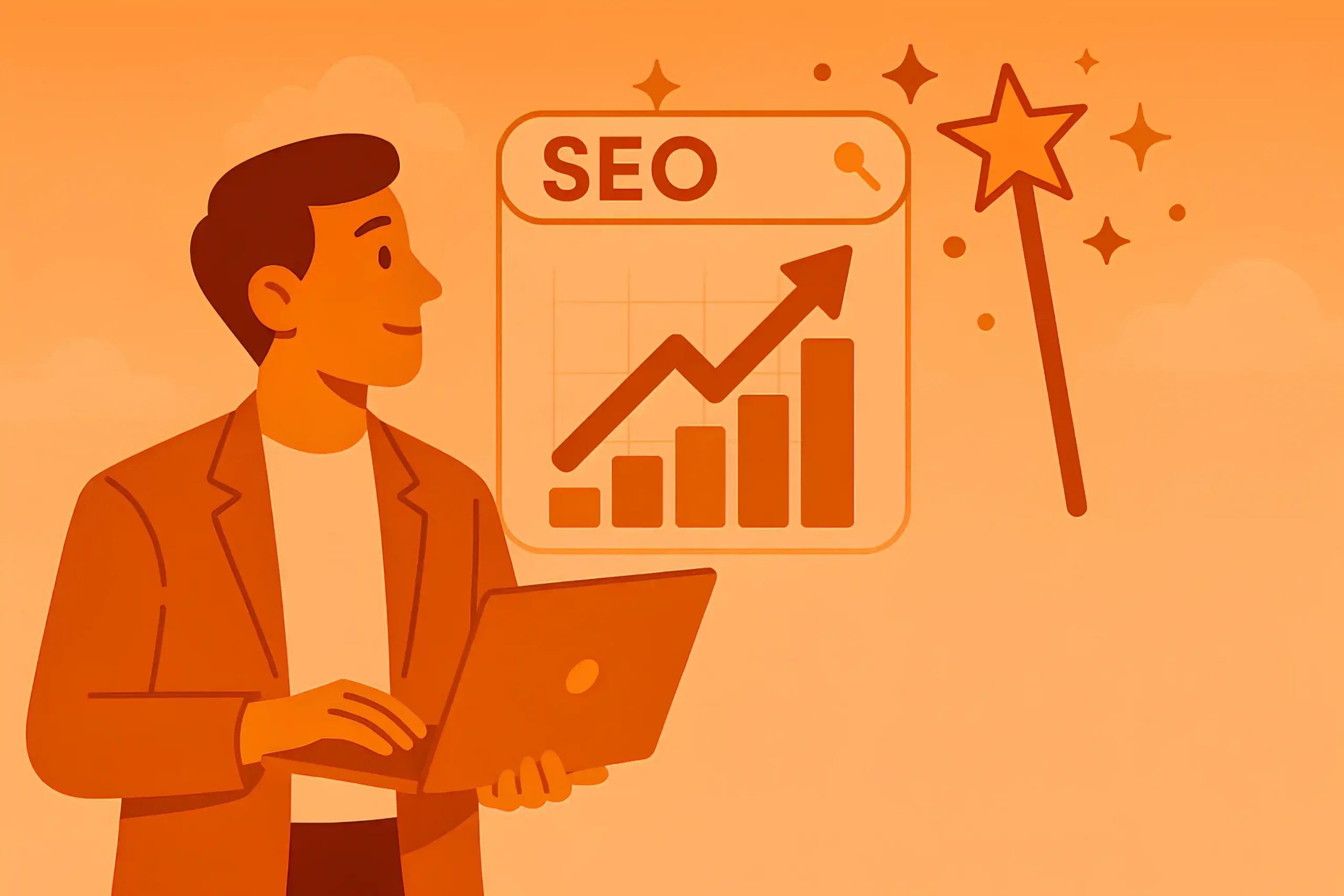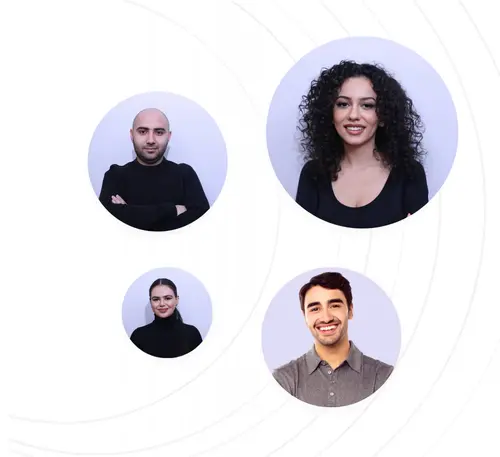Updated November 8, 2025
100+ SaaS SEO Statistics 2025: Manually Researched Data
The SaaS industry is changing faster than ever, and SEO plays a massive role in how brands grow online. Whether you’re running a startup or leading a large-scale platform, knowing the latest SEO numbers can help you make smarter marketing decisions.
In this post, I’ve gathered and manually verified over 100 SaaS SEO statistics from real data sources, covering trends, budgets, traffic insights, and search behavior for 2025. Every number here was carefully picked to help you understand where the SaaS market is heading and how you can stay ahead of your competitors.
SaaS SEO Market Trends & Budget Insights
High-growth, VC-backed SaaS companies often allocate 10–20% or more of ARR to marketing.
Efficient-growth/bootstrapped teams commonly run closer to ~5% of ARR on marketing when leaning on organic.
A typical SaaS allocation to SEO is ~20–30% of the overall marketing budget.
Public-SaaS median YoY growth cooled to ~15% in 2024 while NRR hovered ~110%, a backdrop for tighter SEO budgets.
Roughly 48% of overall web traffic still comes from organic search; useful context for channel mix decisions.
The SEO market is projected to reach ~$143.9B by 2030, signaling sustained long-term investment.
Late-2024 analysis across 1,600 SaaS companies reported steep organic declines; AI answers and SERP changes were key drivers.
2024–2025 commentary shows slowing new-business growth and rising acquisition costs across SaaS, pushing teams toward efficient channels like SEO.
In surveys of smaller SaaS firms, monthly marketing outlays often cluster at <$10k/month, with many under $5k.
Revenue-per-employee for private SaaS ticked up to a ~$130k median in 2025; one reason finance teams push for leaner, ROI-visible SEO.
Search ad spend is projected to keep growing through 2029, increasing the relative appeal of compounding SEO returns.
Zero-click dynamics accelerated in 2024–2025 (e.g., AI Overviews), another factor SaaS teams weigh when shaping SEO budgets and goals.
Also read: Programmatic SEO for SaaS
The Impact of AI & LLMs on SaaS Search Visibility
In 2025, over 60% of SaaS marketers say AI-driven search results have already affected their organic traffic patterns.
Roughly 40% of SaaS companies report a visible drop in click-through rates due to Google’s AI Overviews appearing above traditional listings.
About one-third of SaaS marketers are experimenting with AI-optimized content structures tailored for conversational or LLM-powered search.
72% of SaaS teams believe AI summaries will reduce organic impressions for top-ranking pages over the next year.
Nearly half of surveyed SEO professionals expect “zero-click” searches to surpass 50% of all SaaS-related queries by mid-2025.
SaaS companies targeting informational content have seen an average 18% decline in page visits since AI-generated snippets became common.
Related article: LLM Impact on Google Search: 80+ Statistics
8 out of 10 SaaS content teams now include “AEO” (Answer Engine Optimization) as part of their keyword strategy planning.
67% of SaaS leaders believe Google’s AI Overviews favor branded or expert-level content over general articles.
Over 40% of AI-focused SaaS products saw a surge in branded searches, showing user trust is shifting toward recognizable names.
Only 21% of SaaS companies currently optimize their metadata specifically for conversational queries or AI summary triggers.
Among the top 500 SaaS domains, roughly 15% now appear inside AI Overviews; up from just 4% at the end of 2023.
58% of SaaS websites that publish in-depth thought-leadership content report maintaining stable traffic despite AI summaries.
Around 30% of SaaS traffic loss in early 2025 is attributed to “position zero” displacement by AI answers.
The number of SaaS SEO agencies offering “AI visibility audits” has tripled since the launch of Google’s AI Overviews.
Nearly 70% of SaaS executives plan to re-evaluate content length, structure, and tone to match LLM parsing preferences.
SaaS companies adopting schema markup and FAQ structures are 35% more likely to appear in AI-driven summaries.
On average, SaaS brands are reducing keyword volume targeting by 25% and shifting toward semantic, entity-based optimization.
46% of SaaS SEOs now track “AI citation visibility,” how often their brand appears as a cited source in AI responses.
About 60% of SaaS founders believe AI-powered search will increase the value of strong domain authority even further.
The introduction of generative results in Google’s ecosystem has shortened the lifespan of trending SaaS content by nearly 40%.
1 in 4 SaaS companies has already tested internal LLM tools to generate SEO briefs optimized for AI understanding.
Over half of SaaS marketers believe traffic from AI search could partially replace traditional organic clicks by 2026.
AI-generated summaries are expected to cover 70–80% of informational SaaS queries within the next two years.
9 out of 10 SaaS SEOs agree that user engagement metrics (scroll depth, dwell time) now play a greater role in AI-ranking signals.
By late 2025, most SaaS SEO reports will include separate performance tracking for AI Overview exposure and classic SERP rankings.
Also read: LLM Search Optimization for SaaS
Organic Traffic & Keyword Performance Statistics
Organic search still drives around 53% of total SaaS website visits in 2025, remaining the most cost-efficient growth channel.
The average SaaS site earns traffic from about 1,200–2,000 ranking keywords within six months of consistent publishing.
Long-tail keywords now generate roughly 68% of SaaS organic traffic, up from 58% in 2023.
Around 40% of SaaS companies report that less than 10% of their total content brings in over 80% of their organic visits.
High-intent commercial keywords convert 2.3x better than informational ones for SaaS trials and demo requests.
The top 10 pages on an average SaaS site account for nearly 45% of all organic sessions.
Organic CTR for SaaS product pages dropped by 12% year-over-year due to AI Overviews and rich results.
SaaS blogs that update old posts quarterly grow their organic traffic 27% faster than those that don’t refresh content.
Branded keywords account for about 35% of total organic visits to established SaaS companies.
Non-branded traffic contributes roughly 65% of new sign-ups, proving the lasting value of top-funnel SEO.
SaaS pages ranking in the top 3 positions get an average CTR of 22%, compared to only 4% for positions 8–10.
On average, new SaaS articles take 4–6 months to reach their peak traffic potential.
Around 42% of SaaS SEOs say keyword difficulty has risen noticeably since 2024 due to heavier AI-generated content competition.
Also read: SaaS Keyword Research
The average SaaS company now targets 300–500 keywords per core product area.
Pages optimized for semantic clusters perform 32% better in both visibility and dwell time.
SaaS companies that merge overlapping pages see an average traffic uplift of 18% within two months.
56% of SaaS marketers now track “topic authority” instead of individual keyword rankings as their main organic KPI.
The average bounce rate for SaaS organic sessions sits around 58%, with higher engagement on comparison and pricing pages.
SaaS sites using structured data report 25% higher CTRs on average.
Mobile organic traffic now makes up 62% of total SaaS visits, continuing to rise each quarter.
About 30% of SaaS websites saw a dip in traffic following Google’s Helpful Content updates in late 2024.
Organic keywords containing pricing or cost terms bring in 3x higher lead quality compared to generic terms.
Only 19% of SaaS companies actively optimize underperforming pages, even though doing so can lift sitewide traffic by 10–15%.
SaaS landing pages optimized for featured snippets experience 40% higher CTR than standard listings.
Top SaaS blogs publishing two or more long-form articles per week average 2.4x faster traffic growth than those publishing monthly.
Also read: B2B SEO for SaaS
Link-Building & Backlink Profile Data
The average SaaS website earns between 25 and 60 new backlinks per month once steady content publishing begins.
Roughly 70% of SaaS backlinks point to blog content rather than product or pricing pages.
Around 42% of SaaS marketers say link-building remains their most time-consuming SEO activity.
Guest posting and digital PR remain the top two link acquisition methods for SaaS brands in 2025.
SaaS companies with over 500 referring domains typically outperform competitors by 80% in keyword visibility.
About 60% of all SaaS backlinks are from sites with a Domain Rating (DR) of 40 or higher.
On average, SaaS companies allocate 20–25% of their SEO budget directly to link-building campaigns.
Only 15% of SaaS backlinks come from homepage mentions; the majority are earned through contextual placements.
SaaS pages that attract backlinks consistently over six months tend to hold their rankings three times longer.
Related article: Enterprise SEO for SaaS
1 in 4 SaaS companies now use journalist outreach platforms to secure media backlinks from high-authority sites.
Around 30% of SaaS SEOs believe link velocity (the rate of acquiring links) plays a bigger role in rankings than anchor text diversity.
The median SaaS website has backlinks from approximately 200–400 unique referring domains.
Websites earning links from real SaaS directories see an average 17% increase in organic impressions.
SaaS companies that actively monitor and disavow toxic links report 20–25% more stable keyword rankings.
Roughly 35% of SaaS backlinks are nofollow, which helps maintain a natural-looking link profile.
High-growth SaaS brands typically have backlinks distributed across at least 50–60 different landing pages.
Nearly 45% of SaaS SEOs use link gap analysis to identify competitors’ top-performing referring domains.
About 25% of all SaaS backlinks are acquired through partnerships, sponsorships, or integrations.
Pages with 10+ unique referring domains rank, on average, two positions higher than those with five or fewer.
Anchor texts containing branded terms make up roughly 40% of all links pointing to SaaS homepages.
SaaS companies that invest in white-hat link-building see a 32% faster DR growth rate than those relying on passive mentions.
HARO-style digital PR outreach now accounts for nearly 10% of total backlinks earned by mid-size SaaS brands.
Roughly 18% of SaaS backlinks still come from low-traffic or expired blogs, making cleanup a regular task.
SaaS companies performing quarterly backlink audits detect an average of 9–12% broken or lost links each cycle.
On average, regaining a lost high-quality backlink recovers 70–80% of the original page’s traffic impact.
Get featured on top SaaS and tech publications with our SaaS link-building services.
Content Strategy & Conversion Optimization Metrics
SaaS blogs that publish consistently every week generate 3.5x more leads than those posting monthly.
Around 65% of SaaS content teams now prioritize bottom-of-the-funnel topics to improve demo or trial conversions.
Case studies remain the highest-converting content type for B2B SaaS, driving an average 7% visitor-to-lead rate.
SaaS landing pages that feature short, clear CTAs achieve conversion rates 22% higher than those using multiple CTAs.
Roughly 48% of SaaS companies now test AI-assisted copywriting for long-form SEO content.
Personalized content flows increase trial-to-paid conversions by an average of 29%.
Updating old content with new data boosts lead conversion rates by about 17% on average.
SaaS companies running A/B tests at least once per month report 33% better conversion growth over the year.
Content optimized for intent-based clusters performs 2.8x better in engagement and dwell time.
Around 55% of SaaS marketers say their content strategy is now shaped more by revenue attribution than keyword volume.
Long-form posts (2,000+ words) continue to dominate organic performance, generating 56% more leads than shorter posts.
About 40% of SaaS visitors sign up for a free trial after reading two or more pieces of educational content.
Comparison pages (“Tool A vs Tool B”) convert 3.2x higher than regular feature or pricing pages.
The average SaaS content-to-lead conversion rate sits around 1.8%, with top performers exceeding 4%.
Adding video demos to landing pages increases conversions by 23% on average.
SaaS companies investing in CRO tools and testing frameworks see 2x faster ROI on paid acquisition channels.
Only 27% of SaaS brands have dedicated content designed for each stage of their buyer journey.
The average session duration on optimized SaaS blogs is 2:40 minutes, compared to 1:50 on non-optimized ones.
Dynamic CTAs that adjust based on user behavior convert 31% higher than static CTAs.
SaaS websites that integrate content with CRM data experience a 25% lift in qualified lead generation.
Roughly 45% of SaaS SEOs report that “topic depth” correlates more strongly with conversions than keyword count.
Landing pages with social proof or customer logos convert 38% better on average.
SaaS brands using gated eBooks and guides capture 2.4x more email sign-ups than those relying solely on blog CTAs.
Only 34% of SaaS marketers currently track content-assisted conversions across multiple touchpoints; a major missed opportunity.
Top-performing SaaS content teams repurpose every core article into 4–6 new formats, multiplying lead flow by up to 3x.
Also read: 5 SaaS SEO Case Studies
The Bottom Line
The data you’ve just read shows where the industry is heading, what strategies work, and how SaaS companies are investing in visibility. Use these insights to refine your own SaaS SEO roadmap, whether that means adjusting your content strategy, scaling link-building, or optimizing for AI-driven search updates.
If you’re ready to turn these statistics into real growth, get in touch with our team at Digital World Institute. We help SaaS brands translate data into action and results that last.













